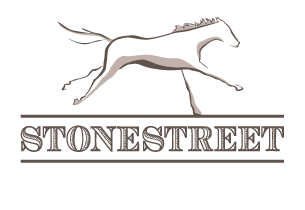Excitement envelops the farm every time a new foal arrives. Immediately, thoughts of this new born flourishing into a future racehorse enter the mind with “Look at those legs!” and “What a pedigree!” While the future is still unknown, the multiple years of training that go into each horse begin on day one.
We begin the process of familiarizing the foal with human contact from the day he or she is born. One of the most important aspects of early training is leading a foal. Lead training is teaching a horse to safely walk along side the handler who is holding a lead rope.
Horses are “flight” animals. When scared, they try to remove themselves from any stimulus that they are unfamiliar with by running away. Foals are unique in that they can see and hear immediately after birth. Within a couple hours, they are able to stand and run, giving them the ability to act on this flight instinct.
Showing a foal that human contact is not to be feared is achieved with daily human contact and means foals are comfortable around their handlers.
For most foals, their first time outside of the barn is the day after they are born. The mother is led in front while another handler leads the young foal close to their body with one arm over the back and the other in front of its chest.
Following their mother comes naturally and the closeness of the handler puts them at ease as they make their way outside to a paddock or round pen. A lead rope may be looped around the rear of the foal acting as a bumper to encourage them to move forward instead of trying to pull backwards.
The foal is led through the gate to the paddock or round pen and then turned to face the closed gate before the handler releases them. Letting a foal lose while it is facing in towards the paddock teaches them to run off immediately, potentially allowing them to kick out. Facing a foal towards the gate gives it time to relax and turn around safely before moving on to play or graze.
Beginning lead training in the first days of life is key, as the foal will grow in size and strength quickly. The handler, when leading, takes the dominant role. This dynamic is instilled in the horse at a young age with the intent that it stays with them as they grow.
Handling an older foal that is not familiar with handlers or lead training is difficult because they have the strength to overpower a handler if scared. Rudimentary early training instills good ground manners, which ensures the future safety of both handler and horse once the foal reaches adult weight of approximately 1300 lbs.
The foal learns the leading process quickly. As training continues, they are led on a lead rope by one handler with their mother led by another in front and eventually by a single handler who will lead both the foal and it’s mother, one lead in each hand. The effect of this early training is apparent throughout the rest of their lives.
